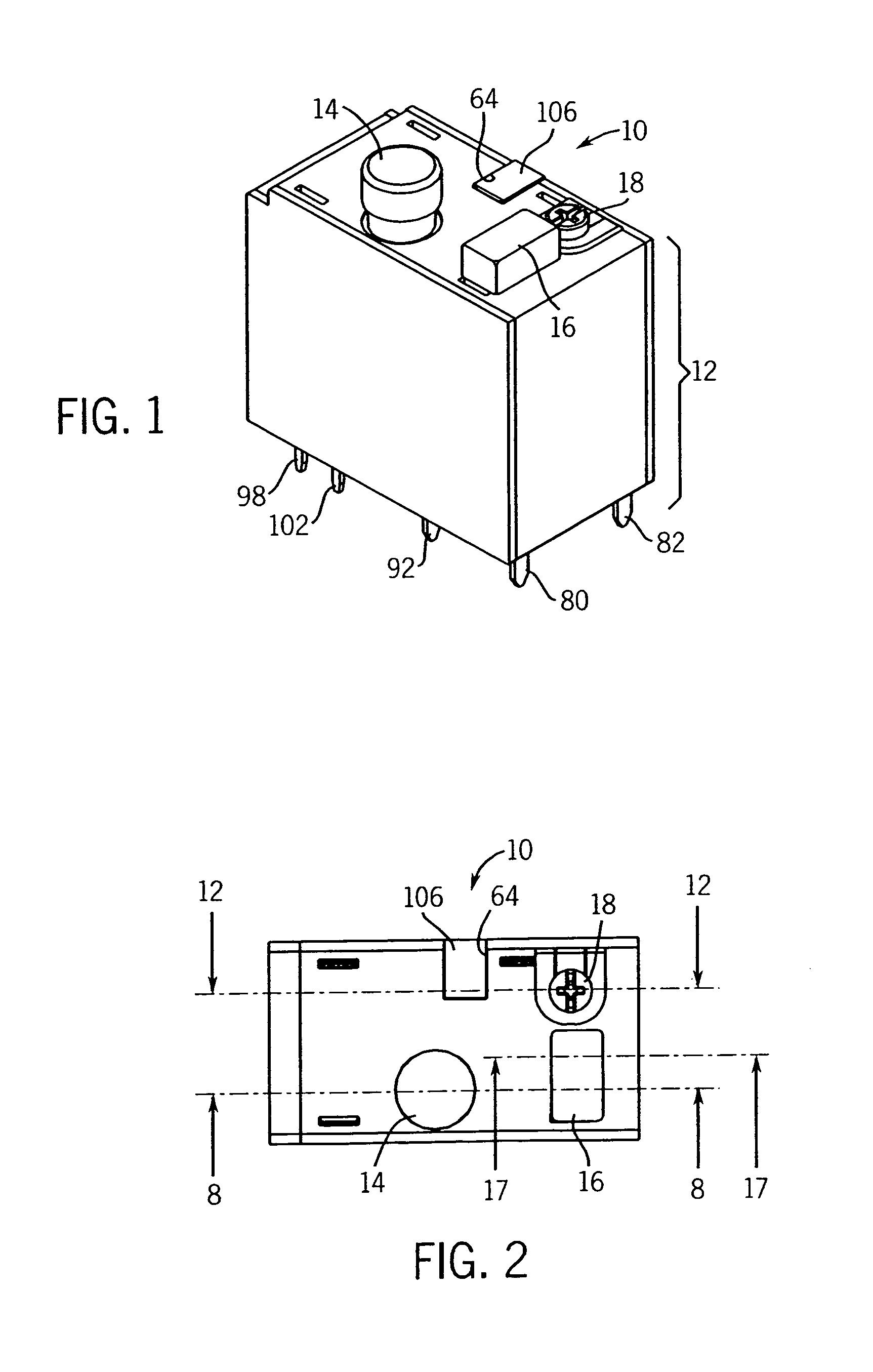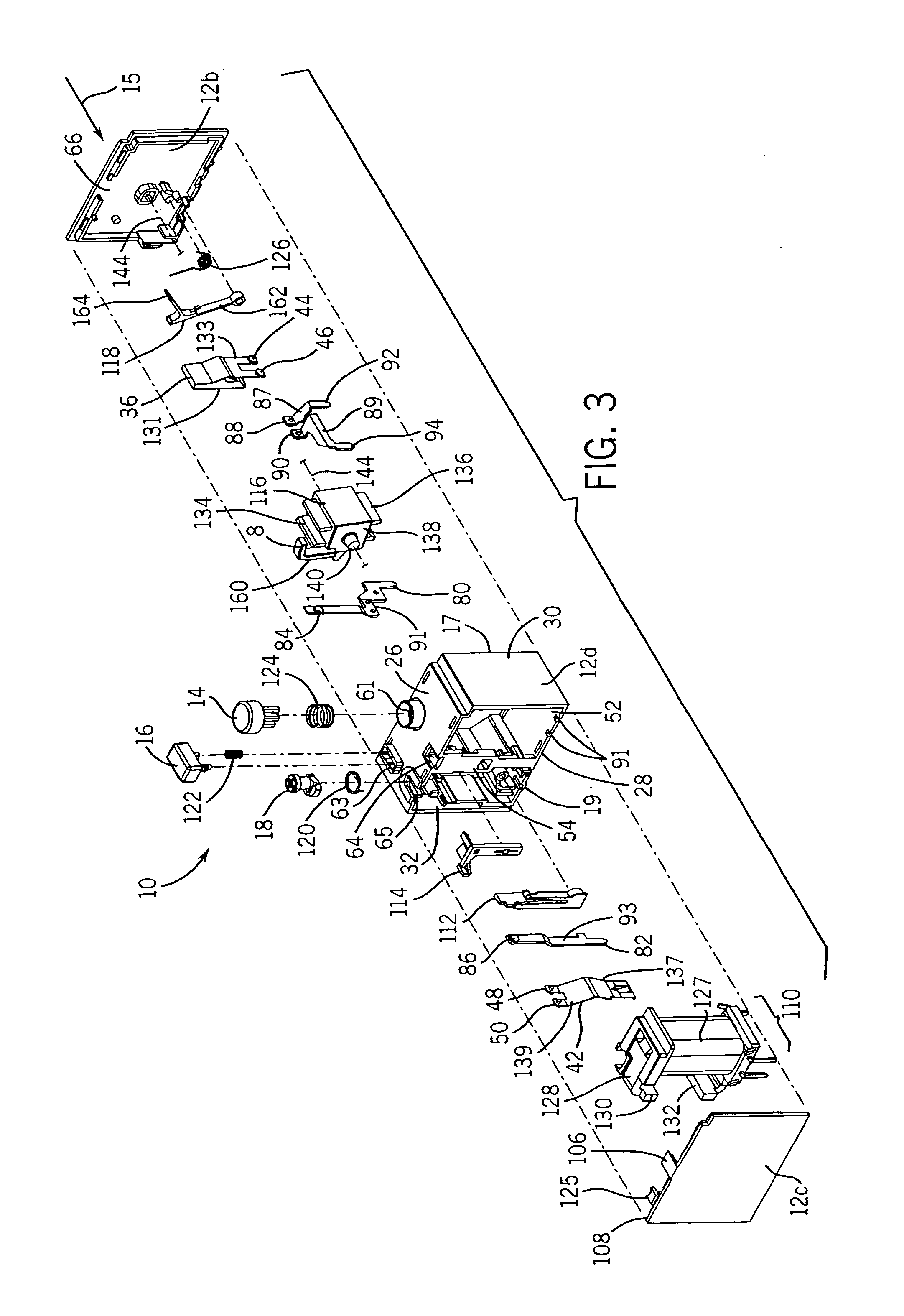Trip-free PCB mountable relay configuration and method
a relay and pcb technology, applied in relays, circuit-breaking switches, printed circuit non-printed electric components associations, etc., can solve the problems of unrealized expected cost savings from parts count reduction, disconnect between parts count and cost, and overheating, etc., to simplify the task of meeting manufacturing tolerances, reduce overall housing dimensions, and reduce overall relay costs
- Summary
- Abstract
- Description
- Claims
- Application Information
AI Technical Summary
Benefits of technology
Problems solved by technology
Method used
Image
Examples
Embodiment Construction
[0050]Referring now to the drawings wherein like reference numerals and labels correspond to similar elements throughout several views and, more specific, referring to FIG. 1, the present invention will be described in the context of exemplary trip-free relay configuration 10. Configuration 10 includes a plurality of components that are housed within a relay housing generally identified by numeral 12 that are linkable to other electronic circuitry (e.g., a printed circuit board (PCB)) via a plurality of electrically conductive pins or terminals extending from an underside of housing 12.
[0051]Generally, the pins include first, second, third and fourth pairs where each first pair pin is integrally connected to a separate normally open contact, each second pair pin is integrally connected to a separate normally closed contact and the third and fourth pin pairs are used to change the states (e.g., open or closed) of the relay contacts. For example, when current flows from the first pin ...
PUM
 Login to View More
Login to View More Abstract
Description
Claims
Application Information
 Login to View More
Login to View More - R&D
- Intellectual Property
- Life Sciences
- Materials
- Tech Scout
- Unparalleled Data Quality
- Higher Quality Content
- 60% Fewer Hallucinations
Browse by: Latest US Patents, China's latest patents, Technical Efficacy Thesaurus, Application Domain, Technology Topic, Popular Technical Reports.
© 2025 PatSnap. All rights reserved.Legal|Privacy policy|Modern Slavery Act Transparency Statement|Sitemap|About US| Contact US: help@patsnap.com



